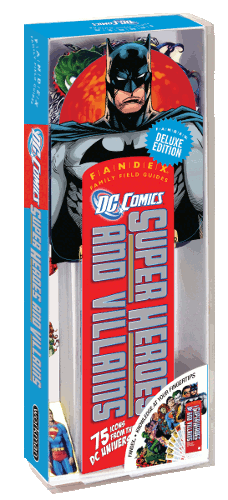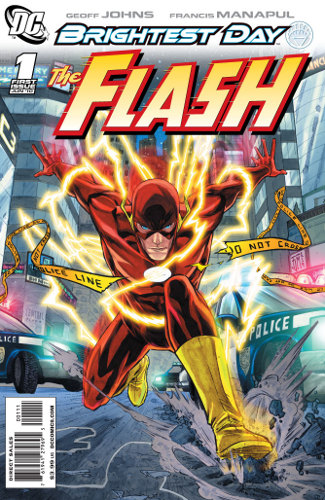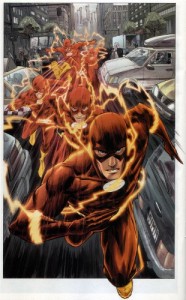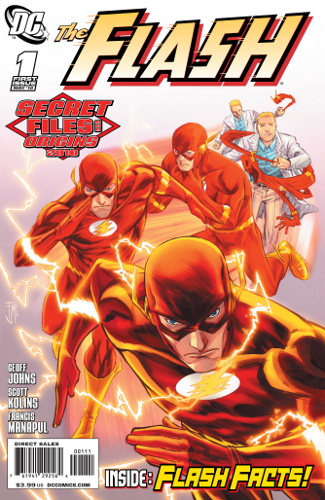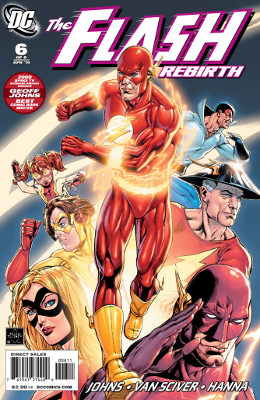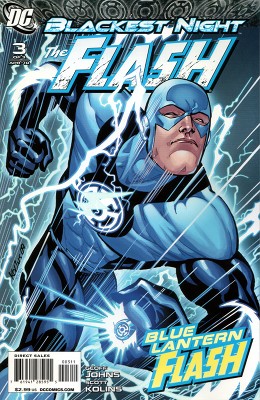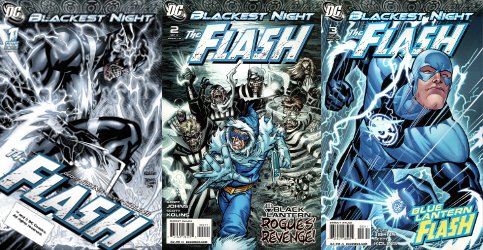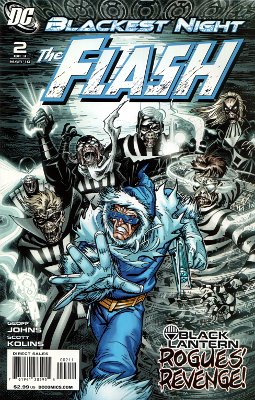Workman’s new DC Comics Super Heroes and Villains Fandex has incredibly detailed information on the DCU’s major characters, but in a format and size that presents a few difficulties.
If you’re not familiar with Fandexes, they’re a series of field guides in the form of cards attached at the base, so that you can swivel any card out and keep it available. You can also open them up as a fan. I first heard of them as nature guides, but they’ve expanded to geography, history, and pop culture.
Wide Coverage
The DC Fandex has surprisingly wide coverage. 75 profiles doesn’t sound like a lot until you consider that it’s comparable to three standard-sized comic books with every page profiling a new character, not unlike the JLA-Z guide that came out around the time of JLA/Avengers. And the text on each card, front and back, is about as long as the classic Who’s Who entries.
They’ve managed to fit in more characters by combining legacies onto a single card. For instance, there’s one card each for Robin, Batgirl, Wonder Girl and Blue Beetle, with the cards profiling the various incarnations of the character. The Flash is simplified to Barry Allen and Wally West, though Jay Garrick and Bart Allen get mentions. On these cards they tend to go for the current version of the character for the image, so Flash is Barry, Robin is Damian Wayne, and Batgirl is Stephanie Brown.
Sometimes it does lead to duplicates. They managed to avoid it with Dick Grayson by profiling him as Nightwing and then picking up the Robin card where it left off with Jason, Tim, etc. But Barbara Gordon gets spotlighted on both the Batgirl and Oracle cards.
One nice bonus: if you were confused about the Monitors’ role in Final Crisis and Superman: Beyond, their card sums it up quite nicely!
Priorities
The guide describes the DCU roughly between Final Crisis and Blackest Night, featuring new versions of heroes such as Batgirl and Robin, and glossing over temporary changes. The Martian Manhunter and Aquaman entries don’t mention their now-reversed deaths, for instance, and Batman’s card focuses entirely on Bruce Wayne, with Nightwing’s card mentioning that Dick has taken over while Bruce was “presumed dead.”

